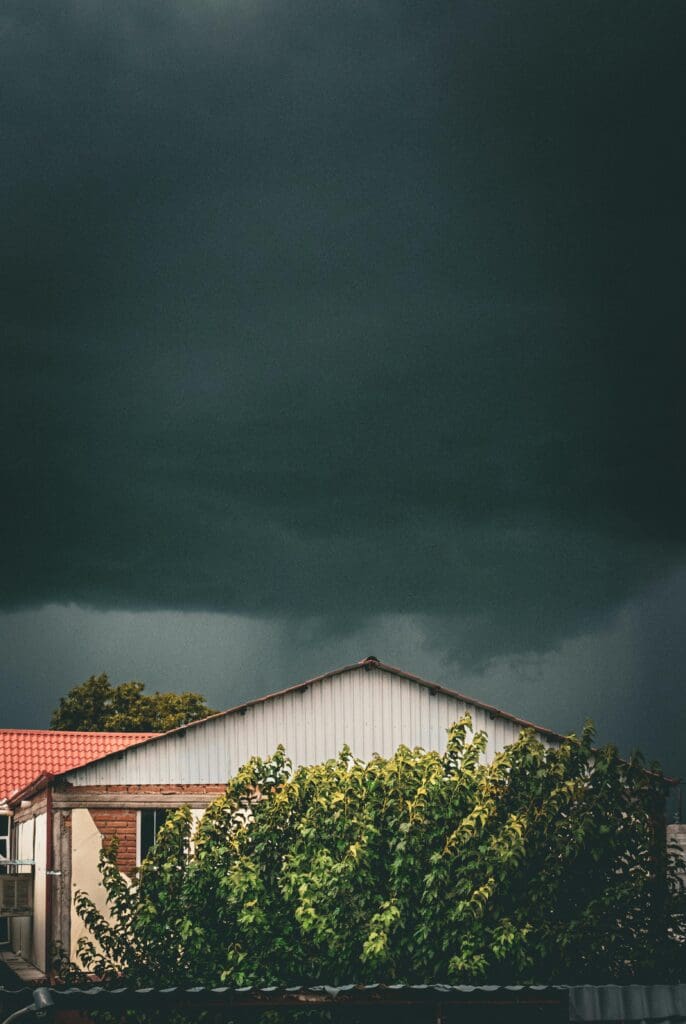Autumn in the Northwest can be a wild ride. One day, it’s crisp and sunny; the next, a howling storm rolls in. And when that happens, your roof is the first line of defense. So, let’s make sure it’s ready. Here are some simple but effective ways to prepare your roof for storm season and avoid costly damage later on.
Give Your Roof A Good Once-Over
It’s easy to forget about your roof until something goes wrong, right? But catching minor problems early on can save you a lot of hassle. Start with a quick visual inspection—if you feel comfortable, grab a ladder and take a look. Here are some areas you should pay attention to:
- Shingles: Look for any shingles that are missing, cracked, or curling up at the edges. Damaged shingles can let water seep in, which can lead to leaks inside your home.
- Flashing: Check around your chimney, vents, skylights, or any other areas where different parts of the roof meet. Flashing (the metal strips that seal these areas) can wear down over time, and if it’s not in good shape, rain can slip through those gaps.
- Sagging or Uneven Areas: If you notice any sagging spots on your roof, this could be a sign of structural damage or weakened areas that might not hold up under the weight of heavy rain or debris.
I’ve learned firsthand that a small issue like a missing shingle can quickly become a more significant problem if ignored. During a downpour, you don’t want to discover that your roof has a weak spot. It’s always better to fix these problems before the storm hits.
Clear Off Debris
Autumn in the Northwest means falling leaves, branches, and plenty of windblown debris. While it might seem harmless, this stuff can actually cause some significant issues if it’s left to pile up on your roof.
- Gutters: Your gutters play a crucial role in guiding water away from your roof and your home’s foundation. But if they’re clogged with leaves, twigs, and dirt, that water has nowhere to go, leading to leaks, ice dams, or water pooling on your roof.
- Roof Surface: Don’t forget to clear off the roof of your house itself. Branches can scratch or puncture your shingles, and leaves can trap moisture, leading to mold or rot. You might be surprised how quickly this debris can pile up, so regular maintenance is critical.
- Trimming Trees: Take a look at the trees around your home. Are there branches hanging over your roof? Strong winds can snap those branches, sending them crashing onto your roof. Trimming those back will help prevent this kind of damage and reduce the amount of debris that lands on your roof in the first place.
Secure Loose Shingles and Vents
Once you’ve done a visual inspection and cleared away debris, it’s time to check for anything that might be loose. Strong winds can easily catch and lift loose shingles or vents, exposing your home to water damage.
Here’s what to check:
- Loose Shingles: If any shingles are loose or damaged, it’s best to replace them before the rainy season starts. You can usually spot these by looking for uneven edges or gaps where water could get in.
- Flashing: We mentioned flashing earlier, but it’s worth taking a second look. Flashing that’s pulling away from the roof can allow water to get in, and even a small gap can lead to leaks.
- Vents: Make sure that roof vents are secure and in good condition. A loose vent cover can be blown off in high winds, leaving a wide-open space for rain to get into your attic.
When to Call a Professional
While some basic roof maintenance is something you can do yourself, sometimes it’s best to call in a professional. A roofing expert can spot things you might miss and ensure your roof is in tip-top shape for the stormy months ahead.
Here are a few times when it might make sense to bring in a pro:
- If your roof is older or you’ve never had it inspected before
- If you’re noticing signs of damage but aren’t sure how serious they are
- If you don’t feel comfortable climbing up on the roof yourself
At Fast Roofing NW, we’ve been helping homeowners across the Pacific Northwest prepare their roofs for autumn storms for years. If you live in roofing Shoreline, WA, or nearby areas, it’s worth getting a professional inspection to ensure your roof is in top condition.
Stay Ahead of the Weather
With the unpredictable weather that autumn brings, now is the time to start preparing your roof. By taking these steps—inspecting your roof, clearing debris, securing loose elements, and calling in a professional when needed—you can help protect your home and avoid major repairs down the line.
Getting ready now will give you peace of mind when the storms hit. So, take the time to check off these tasks, and you’ll be much better prepared to face the challenges that the Northwest’s autumn storms can bring.

